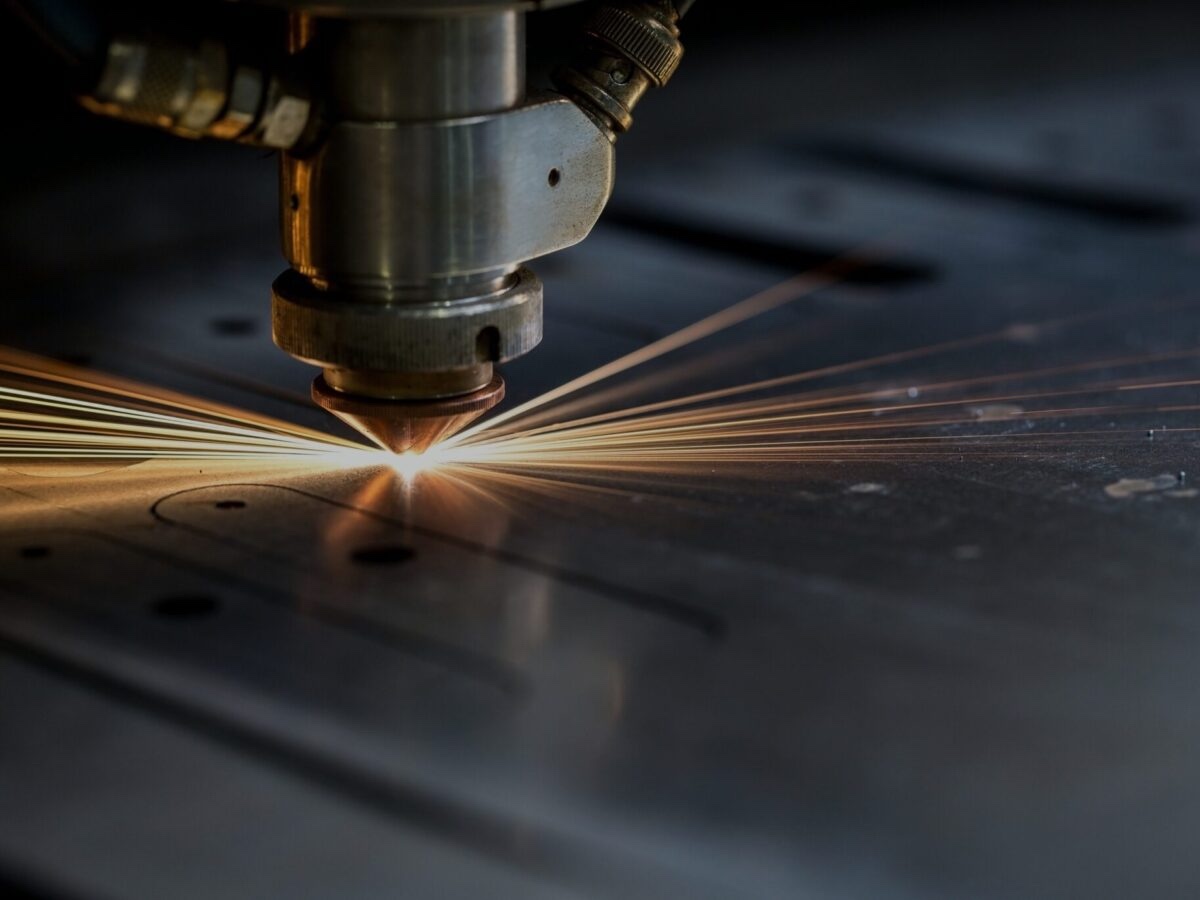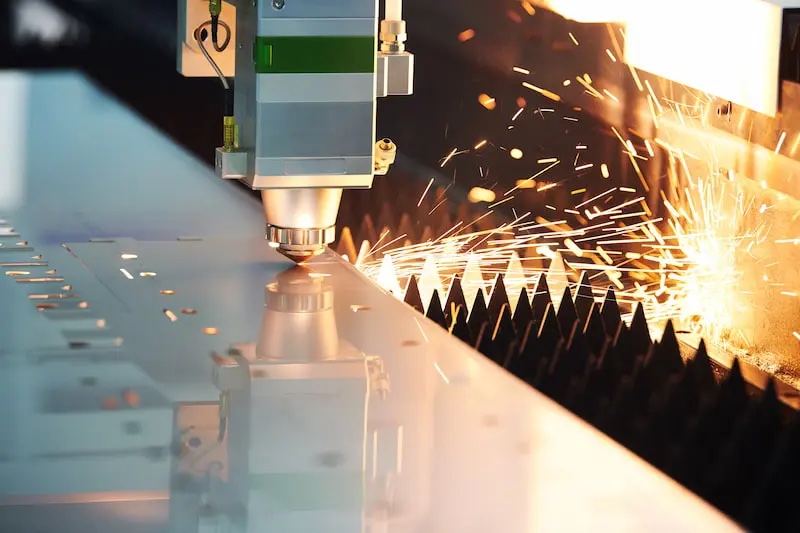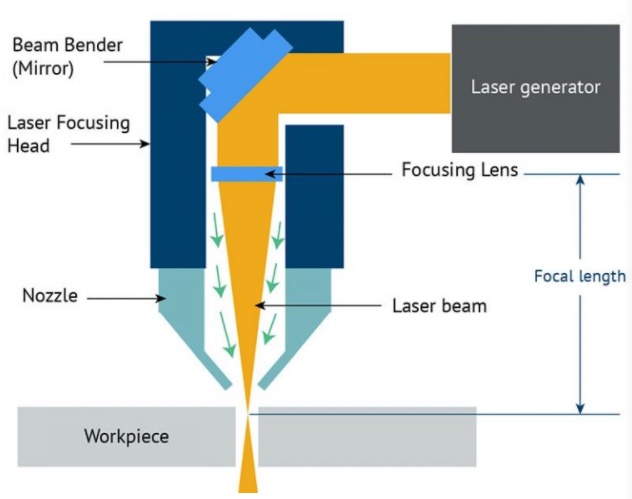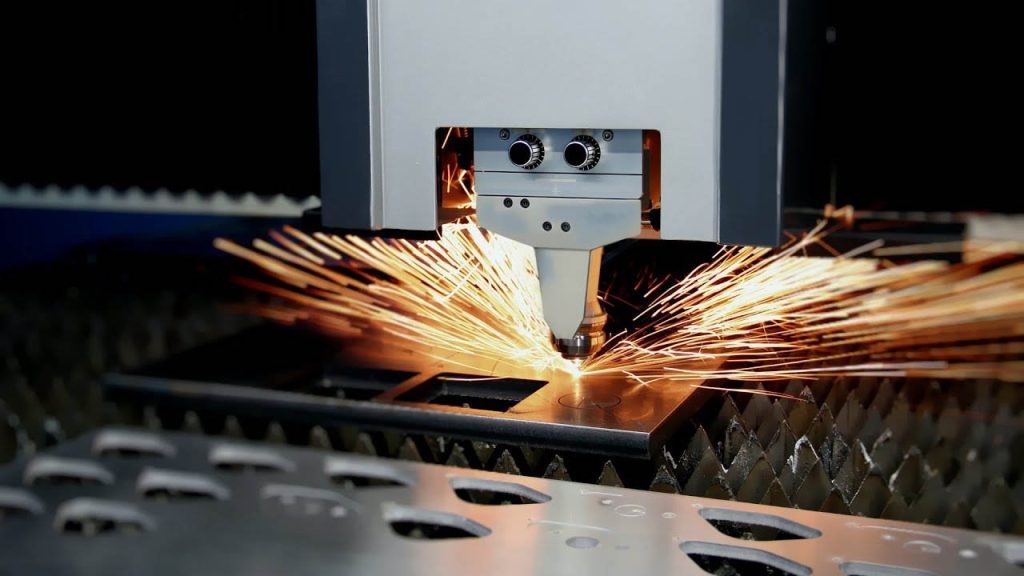Carbon steel remains a fundamental material in today’s industrial manufacturing. As its use grows, manufacturers continue to seek the most suitable techniques to machine this material. As a result, they ponder the question, “can you laser cut carbon steel?” The answer is yes.
Fiber laser cutting machines are increasingly recognized for their efficiency and precision in processing carbon steel. They use powerful laser beams to cut carbon steel sheets and plates with high precision. These machines are widely adopted in the manufacturing industry due to their speed, accuracy, and cost-effectiveness.
This article will answer the burning question more extensively and give a complete breakdown of the steps to cut carbon steel with this CNC metal cutting process. We aim to help you understand the process, including optimal cutting parameters and safety measures, to ensure high-quality results.
Can You Laser Cut Carbon Steel?
Yes, laser cutting is highly effective for carbon steel. The material’s composition allows it to absorb laser energy efficiently. Thus, it is an ideal candidate for this cutting process. A focused laser beam is often directed onto the carbon steel surface, melting, burning, or vaporizing the material to create precise cuts.

Carbon steel is well-suited for laser cutting because it absorbs laser energy effectively due to its carbon content. This absorbed energy will be converted into heat, which facilitates a smoother cutting process. Moreover, the relatively low thermal conductivity of this material means the heat generated by the laser beam stays concentrated in a small area. This leads to a rapid increase in temperature, which allows for quick and precise cuts.
Furthermore, laser cutting offers several advantages over traditional methods when working with carbon steel:
- High Efficiency and Speed: It is faster than traditional cutting methods, which helps reduce production time. Carbon steel’s efficient absorption of laser energy streamlines the process.
- Precision and Accuracy: The laser beam’s narrow focus allows for highly accurate cuts with minimal kerf width (typically 0.1 to 0.4 mm). This results in smooth and precise edges, reducing the need for further finishing.
- Cost-Effectiveness: Fiber laser cutting machines are safe and easy to use, reducing labor costs. Their high efficiency also translates to lower energy consumption and reduced waste, contributing to overall cost savings.
- Versatility: Laser cutting is versatile and can handle various thicknesses of carbon steel, including plates up to 50 mm thick, which is beneficial for a wide range of applications.
- Improved Quality: Laser-cut carbon steel surfaces are smooth and visually appealing. This enhances the final product’s appearance and simplifies subsequent processes such as welding or painting.
How to Laser Cut Carbon Steel: A Step-by-Step Guide
Laser cutting carbon steel involves several steps to achieve a precise and clean cut. Following the correct procedures ensures optimal results and maximizes the efficiency of the process.

Step 1: Material Preparation
Clean the carbon steel sheet thoroughly to remove any oil, dirt, or debris that could affect the process. Inspect the material for any defects or irregularities that may impact the cutting quality. Place the sheet on the machine bed, ensuring it is flat and stable. For thicker plates, use clamps or fixtures to secure the material in place and prevent any movement during cutting.
Step 2: Cutting Path Design
Import the CAD file of the desired shape into the machine’s software. The software will generate the cutting paths based on the part geometry, taking into account the cut sequence, laser orientation, and pierce points. Optimizing the cutting path is crucial for achieving high-quality cuts and reducing cutting time.
Step 3: Select Appropriate Laser Power
Choose a laser power level appropriate for the thickness of your specific carbon steel. For most carbon steel materials, a power of 3 kW or higher is recommended. Higher power levels may be necessary for thicker materials to ensure complete penetration and clean cutting. Consider the laser cutter’s capabilities and adjust the power level accordingly.
Step 4: Adjust the Focus Lens
Adjust the focus lens to concentrate the laser beam on the carbon steel surface. A tighter focus is generally required for thicker materials to increase the energy density. The suitable focal length will depend on the material’s thickness, with shorter focal lengths typically used for thicker carbon steel. Remember to ensure the focus is optimized for clean cutting and minimal heat-affected zone.
Step 5: Set Cutting Parameters
Set the cutting speed, power, and other parameters based on the carbon steel’s thickness and grade. Slower cutting speeds are often required to ensure full melting and removal of the material, especially for thicker carbon steel. Other parameters like frequency, pulse width, and laser mode will also help you optimize the cutting process.
The optimal cutting parameters for carbon steel depend on the material’s thickness and grade, as well as the capabilities of your fiber laser cutter. Below are some general guidelines:
- Laser Power: To effectively cut through carbon steel, use a high power level, typically 3 kW or more. Higher power is necessary for thicker materials; the maximum power your cutter can output will determine the thickest material it can handle.
- Cutting Speed: Opt for a slower cutting speed to allow complete melting and removal of the material. Speeds of 100-300 inches per minute are common for carbon steel. Slower speeds may be required for thicker material or higher cut quality. However, choose the slowest practical speed to maximize efficiency.
- Oxygen Assist Gas: Use oxygen as an assist gas to help remove molten material from the cutting path. Adjust the flow rate to maintain a clear path at the desired cutting speed and thickness. Higher flow rates may be needed for faster cutting speeds or thicker materials; inadequate flow can lead to poor cut quality.
- Focus: Use a tighter focus to concentrate the laser energy. The appropriate focal length will depend on the material’s thickness, with shorter focal lengths typically used for thicker carbon steel. Optimize the focus to achieve clean cuts and minimize the heat-affected zone.

Experimenting with different power levels, cutting speeds, oxygen flow rates, and focus settings will help you determine the optimal parameters for efficiently cutting carbon steel with a fiber laser cutter. The goal is to use sufficient power with a tight focus while maximizing cutting speed for your specific application.
Step 6: Use Oxygen Assist Gas
Oxygen assist gas is typically required to cut carbon steel to remove molten material from the cutting path. Adjust the flow rate of the oxygen based on the cutting speed and material thickness. Higher flow rates are needed for faster cutting or thicker materials to maintain a clear cutting path. Always ensure adequate ventilation and follow safety guidelines when working with oxygen assist gas.
Step 7: Engage Laser and Cutting Head
Carefully position the cutting head over the material, ensuring proper alignment. Engage the laser and begin the cutting process. Monitor the cutting process closely, making any necessary adjustments to speed, power, or assist gas flow to maintain high cut quality.
Step 8: Follow All Safety Precautions
When operating a fiber laser cutting machine, safety is paramount. Here are key safety precautions when laser cutting carbon steel:
- Laser Safety: High-power lasers can cause serious injuries, including eye damage and skin burns. Always wear protective eyewear and ensure the machine area is enclosed and labeled properly. Operators should undergo regular laser safety training.
- Material Handling Safety: Carbon steel plates can be heavy and difficult to maneuver. Use proper lifting equipment such as cranes or hoists to prevent injuries from lifting or dropping. Make sure all equipment is rated for the weights being handled.
- Gas Safety: High-pressure gases like oxygen are used in laser cutting. Ensure proper ventilation, storage, and gas handling procedures to prevent asphyxiation or explosions. Leak detection systems and emergency shutoff valves should be in place.
- Electrical Safety: Fiber laser cutters contain many electrical components that pose risks of electric shock, burns, and fires. Follow proper grounding, insulation, and lockout/tagout procedures.
- Fire Safety: Sparks and molten metal generated during cutting can ignite flammable materials. Keep appropriate fire extinguishers on hand, and maintain a clean, debris-free work area.
Conclusion
Fiber laser cutting machines provide an efficient, precise, and cost-effective method for cutting carbon steel. When machine components are correctly selected and well-maintained, and safety measures are followed, fiber laser cutting systems can deliver efficient, cost-effective, high-quality cuts in carbon steel. Mastering machine setup, optimizing cutting parameters, troubleshooting issues, and adhering to safe practices are essential for successful operation.
With their versatility, precision, and speed, laser cutting machines have become indispensable tools for industries working with carbon steel. Always remember to work with a reliable manufacturer with laser cutting capabilities. They will use their expertise and experience to deliver optimal results for your project.









